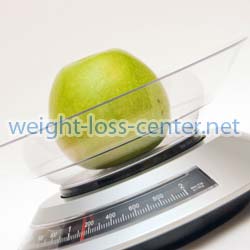A lot of talk has surfaced in the weight loss community about low-energy-dense foods, but what are they? “Low-energy-dense foods” is just another way of describing foods that provide a lot of energy or can be eaten in larger quantities without having too many calories. Although at first glance it sounds like a fad diet, there is true weight loss powers in eating larger quantities of these types of food.

Low-energy-dense foods is a way of describing foods that provide a lot of energy or can be eaten in larger quantities without having too many calories.
When one compares the logic, it is apparent that a diet high in low-energy-dense foods can encourage weight loss. Let’s look into how this works. All food contains calories. The amount of calories contained in food is divvied out by portions which are measured by volume. For instance a cup of chopped carrots has an equivalence of about fifty calories. In order to lose weight, the body has to take in fewer calories than it would typically get on a daily basis. Not a lot, mind you, but just enough that it needs to start chipping away at the energy reserves (fat stored in the body).
If you set a calorie limit for yourself, it would be logical to want to eat more of the foods that won’t cost as much of your calorie limit in order to feel full, rather than splurging on a small portion of high calorie food that’s going to leave you hungry again in two hours. For example, you could have three apples at 231 calories or you could have a 2.8oz slice of plain cheesecake which costs you 257 of your daily calorie allowance. Three apples are definitely going to be more filling than one slice of cheesecake, plus they can be eaten at separate times throughout the day.
Eating plenty of low-energy-dense foods is an especially good weight loss program for most of us dieters as we don’t have to struggle so hard to fight against the typical dietary mindset that often feels suffocating and intrusive. If we constantly deny ourselves any indulgences and stick to a bland and very strict diet, we are more likely to break down and give into temptation in the worst sort of way: binge eating. But by eating more low-calorie foods throughout the day, we leave ourselves open to the occasional treat without suffering serious set-backs.
The great thing about low-energy-dense foods is that there are plenty of them out there. Raw fruits and vegetables, such as broccoli, cauliflower, carrots, berries, apples, plumbs, and cherries have complex but pleasing tastes. Because of the complexity of their flavors, we are able to feel as though we’re eating normally or even receiving a treat rather than having to settle for a “lesser of evil” among diet foods. These foods are also great for burning fat more quickly because raw fruits and vegetables often use up more calories during digestion than they actually provide the body with.
Constructing a meal plan that consists of low-energy-dense foods is easy once you know what foods to look for. The idea is to stick to water and fiber-based foods. Water-based foods are those which have high water content, such as citrus fruits, melons, tomatoes, and carrots. These foods are great for snacking as they are light and you can eat loads of them without the burden of excessive calorie consumption.
Foods high in fiber, such as broccoli, avocado, and sprouts, are also good choices because they are relatively low in calories (although not as much as water-based foods) and they take longer to break down. Because the digestive process is a little slower for complex fibers, it has the effect of making one feel full for a longer period of time. The one thing to go easy on is whole grains, which are excellent sources of fiber but tend to be a little higher in calories.
It’s worth bearing in mind that a well-rounded diet does include healthy sources of protein, such as lean chicken and turkey, eggs, nuts, and beans. Fruits and vegetables make for excellent filling snacks and side dishes, but one should never completely cut out protein from their diet without the approval of a doctor.
Other Related Posts and Articles you May Find Interesting: “Improving Weight Loss with Scheduled Meals”, “Adding Whole Grains to Your Diet”, “Carb Protein Fat Ratio in a Healthy Weight Loss Diet” and “Weight Loss Foods to Have on Hand”.





Leave a Reply